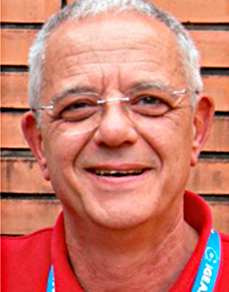The new CAD/CAM technologies have brought a veritable revolution in the field of dentistry and dental technology in particular. In addition to new materials, such as zirconium, these technologies also offer solutions for more conventional materials like titanium and the cobalt-chrome. This latter can be worked not only by milling, but also using laser sintering systems, building up the component with the addition of microscopic spheres that are fused together by a numerically-guided laser beam.
In the search for a material that could replace the precious metal, which has by now reached intolerable price levels, at least for routine jobs, and that could maintain the long-consolidated characteristics of precision and reliability in casting techniques, the choice of this system seemed to us to be economically viable and interesting in terms of practicality. We were persuaded to explore this technique by the fact that there is no need to change the ceramic casing, that we are thus able to exploit the experience of over forty years with ceramics on base metals, and last but not least, that there is the possibility of working on pieces again with lasers and other types of welding. Our initial experiences were not particularly satisfactory in terms of precision, but all other aspects gave excellent results. But good results without precision are not good results!
The situation was frustrating. We started from the consideration that every material has its prerogatives, and these do not always coincide with conventional ways of working. Very often it can be wiser to adapt to the characteristics of new technologies than to try to adapt these technologies to our habits.
So reconsidering the problem, we found that laser-sintered edges have a “teardrop” shape that is not a defect, but is instead a specific characteristic of this technology. It would therefore be impossible to achieve precision in this area. Precision, if attainable, must be “upstream” from these teardrop edges, which must be positioned beyond the preparation during scanning to allow the teardrop shape to be eliminated.
The technique to achieve this level of precision is extremely simple:
Locate the closure line beyond the preparation.
Remove the “teardrop” edge.
Finish off by trimming away excess material until the closure edge.
Clearly, the more the preparation is vertical, the greater will be the possibility of achieving high precision. Having obtained this result, we decided to verify whether this precision could be maintained on larger jobs as well. We used a step-by-step process on a small bridge of three elements to document this further experience and further develop the technique.
After these results, the construction of laser-sintered bridges became a massive part of our laboratory’s daily routine, resolving the problems encountered at the outset.
In the second part of this study, we will discuss particularly extensive cases, with the problems they present and strategies to resolve these problems.


